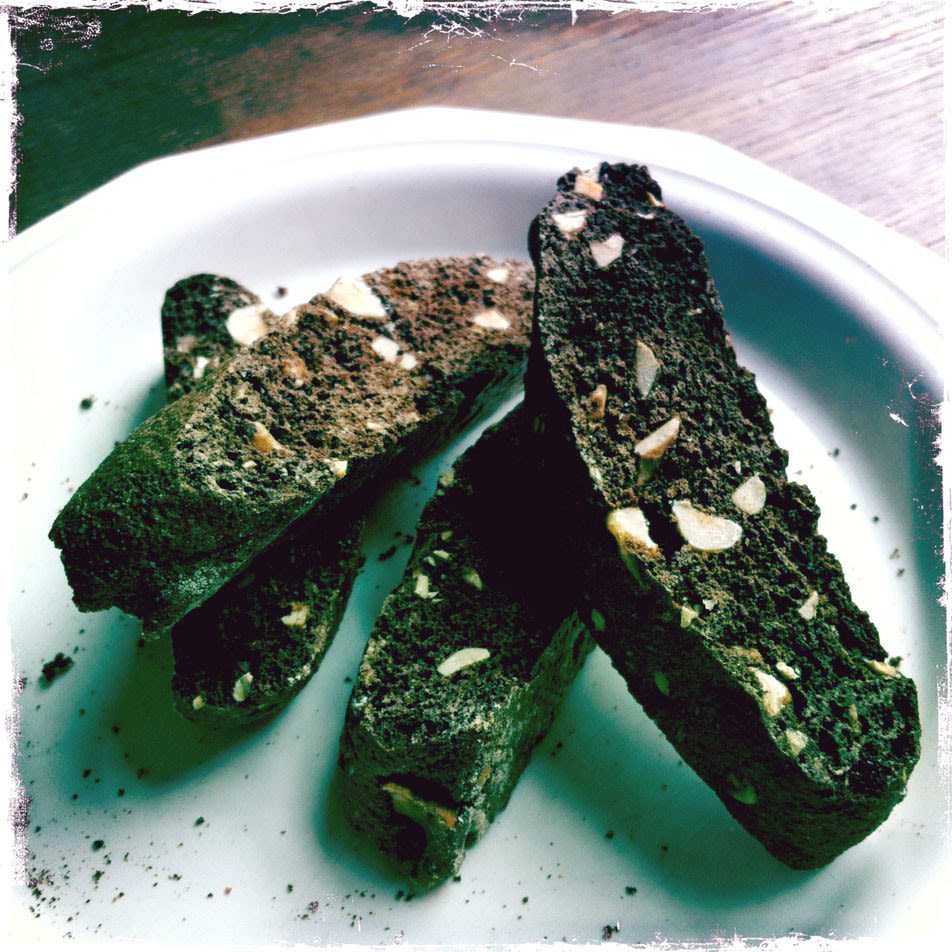Biscotti Basics

Cookie fashion has embraced biscotti for quite a while now – for at least a dozen years, with the rise of coffee culture (think of Starbucks and its spawn). Biscotti, in a store or at a café, are spendy, though. Making them at home is inexpensive and easy. So why don’t we?
Perhaps the task seems mysterious or intimidating because biscotti don’t fall into the typical cookie categories most of us have grown up with, the drop cookie or the refrigerator dough/roll-out cookie. Tollhouse cookies and biscotti were not separated at birth. It’s worth breaking through our cookie assumptions and breaking into the biscotti, though. The process of baking biscotti, the classic crisp, Italian, twice-baked cookie, is actually quite simple; it just requires different steps than the Tollhouse and its brethren.
My favorite biscotti recipe is classic, very crunchy, and contains no butter or oil. Some less traditional biscotti recipes do use butter, resulting in a softer, more typical cookie type texture that doesn’t beg so much to be dunked before eating. But the crispy classic is not only more traditional, it's healthier. (Though being a "low-fat cookie" wasn't the original incentive; without fat or dairy, and baked twice, this dry, hard cookie packed well and lasted a long time on journeys by soldiers and others in the Roman Empire.)
The recipe comes from Leslie Cole at the Oregonian, adapted slightly from Lou Siebert Pappas's 2000 book Biscotti, and very similar to the classic Maida Heatter's Best Dessert Book Ever recipe for chocolate biscotti. (I love the way recipes evolve and adapt according to the home cook and his or her kitchen and tastes.) The flavor is lightly cocoa, not overwhelmingly chocolatey. To up the chocolate factor, you could dip the finished cookies in a chocolate glaze. May this become one of your family favorites.
Biscotti Cioccolato
Makes about 3 1/2 dozen
- 3 eggs
- 1 teaspoon vanilla extract
- 1/4 teaspoon almond extract
- 1 3/4 cups unbleached all-purpose flour
- 3/4 cup granulated sugar
- 1/3 cup unsweetened cocoa
- 1 tablespoon instant espresso powder or coffee granules
- 1 teaspoon baking soda
- 3/4 cup hazelnuts
- Dash of salt
Preheat oven to 300 degrees. In a small bowl, beat eggs, vanilla and almond extract with a wire whisk. Set aside.
In a large mixing bowl, combine flour, sugar, cocoa, espresso powder, baking soda and salt. Add egg mixture and mix until blended, about 1 minute [or longer; you may need to use your hands and knead the dough to mix it well, at this stage and/or once you add the nuts in the next step].
Fold in the nuts. [Again, use hands to knead dough as needed.]
Divide the dough in half. On a greased and floured baking sheet, pat out dough into 2 logs about 1/2 inch thick, 1 1/2 inches wide and 12 inches long, spacing them at least 2 inches apart.
Bake in the middle of the oven for 50 minutes or until set firm and baked through. Transfer from the baking sheet to a cooling rack. Let cool 5 minutes. Turn the oven down to 275 degrees.
Place each baked log on a cutting board. With a serrated knife [or very sharp chef's knife], cut slices diagonally [i.e., 45 degrees across the length of the log], about 1/2 inch thick. Lay the cut sides flat on the baking sheet and bake for 20 to 25 minutes, turning them over once, to dry slightly. Let cool on a rack. Store in tightly covered container.
For a softer, richer cookie (i.e., one with butter) we’ve had great success with this favorite recipe from Bon Appetit, for Lemon Walnut Biscotti.
